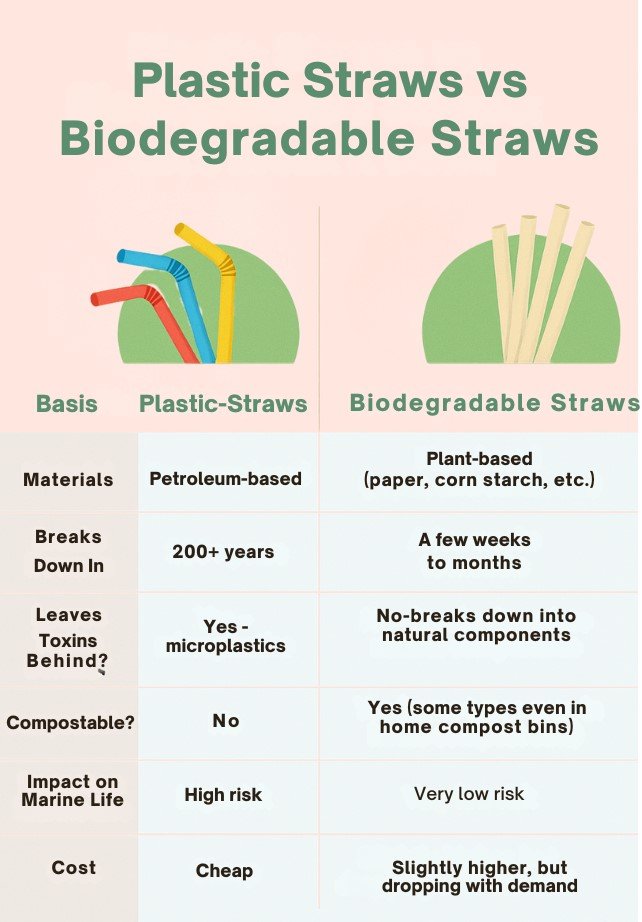We’ve all used straws—at cafes, parties, or just to sip on a cold drink at home. But as our awareness about environmental impact grows, one simple question keeps popping up: should we still be using plastic straws, or is it finally time to switch to biodegradable straws?
If you’ve been wondering the same, you’re not alone. Let’s walk through the differences and figure out what really makes one option better than the other—not just for us, but for the planet.
What’s Wrong with Plastic Straws?
We get it—plastic straws are convenient. They’re cheap, don’t get soggy, and are available just about everywhere. But here’s the not-so-fun part: they stick around for hundreds of years. One straw, used for just a few minutes, could outlive your great-grandchildren.
Plastic doesn’t biodegrade. It breaks down into tiny pieces—microplastics—that end up in oceans, rivers, and even our food. Sea turtles and birds often mistake these small bits for food. It’s heartbreaking, and it’s happening on a global scale.
So while tossing that straw may feel harmless, it adds to a much bigger problem.
So, What Are Biodegradable Straws?
Now enter the alternative—biodegradable straws. These are made from natural or plant-based materials like corn starch, paper, bamboo, or even wheat. Unlike plastic, they break down much faster and don’t leave behind toxic chemicals or microplastics.
That’s a big deal.
Whether you’re running a business or just looking to make your home more sustainable, switching to eco-friendly straws is one of the easiest ways to cut down on unnecessary plastic waste.
Plastic Straws vs Biodegradable Straws: Let’s Break It Down
Here’s a quick side-by-side comparison to make things simpler:

Looking at this, it’s easy to see why biodegradable straws are gaining momentum.
But Are All Biodegradable Straws the Same?
Not really. It’s important to know that not all eco-friendly straws behave the same way.
- Paper straws: Great for short uses, but may get soggy after a while.
- PLA straws: Made from corn-based plastic. Biodegradable, but only in industrial composting units (not your backyard bin).
- Wheat and bamboo straws: 100% natural, durable, and compostable. Plus, they look kind of cool.
So, when choosing biodegradable straws, it helps to know what they’re made of and how to dispose of them properly.
Why This Matters for Businesses Too
If you run a café, restaurant, or any food-related business, switching to eco-friendly straws isn’t just the right thing to do—it’s also good for business. Today’s customers notice sustainable practices. They talk about it, they write reviews, and yes, they come back.
Using biodegradable straws tells your customers that you care—not just about profit, but about the planet.
And if you’re a customer, don’t be afraid to ask businesses what kind of straws they use. Every small conversation adds up.
Final Thoughts: A Small Swap, A Big Difference
We often underestimate the power of small changes. Swapping out plastic straws for biodegradable straws may feel like a drop in the ocean, but it’s exactly these small shifts—made by millions—that build up to real change.
So the next time you grab a drink, think about what’s in it—and what it’s being served with. It’s a simple choice that says a lot about the kind of future we’re choosing.
Let’s sip smarter. Let’s go biodegradable.

